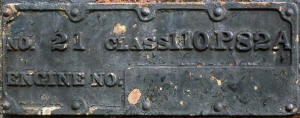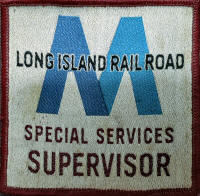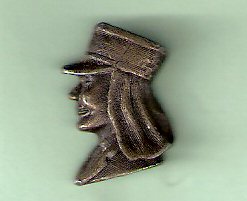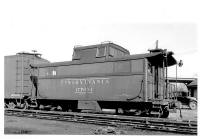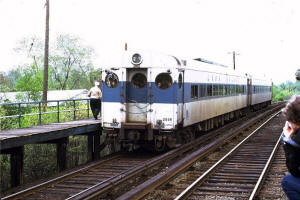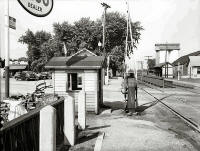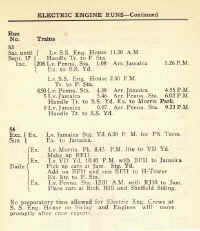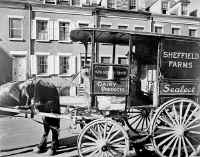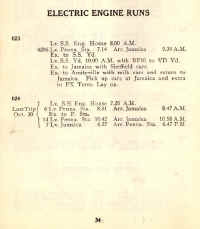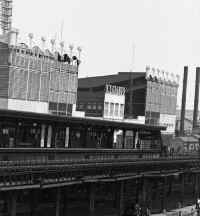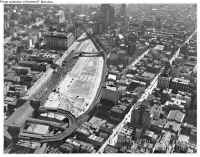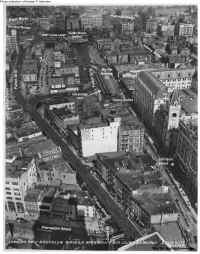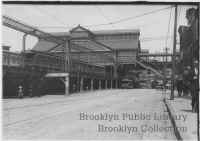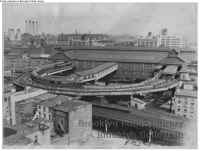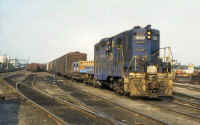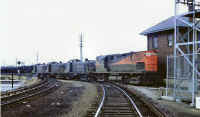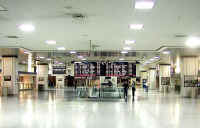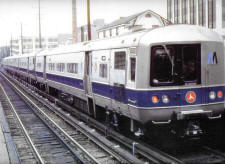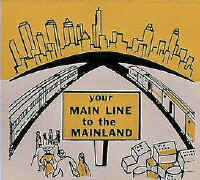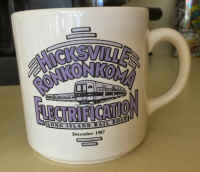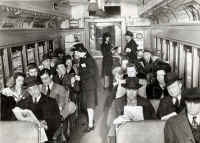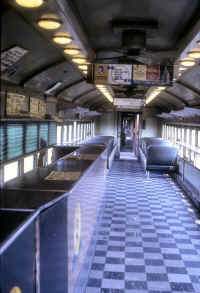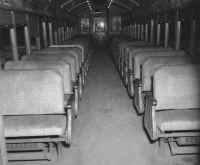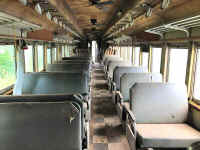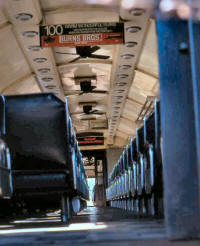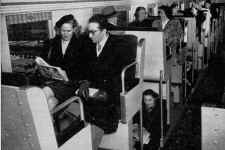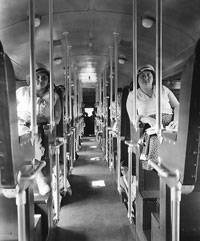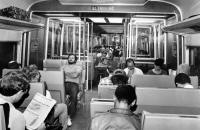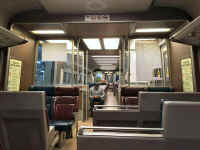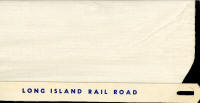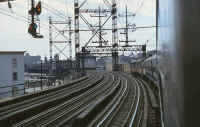| Long Island Rail Road - Odds & Ends - Page 2, Page 1 | |||||||||
| LIRR 1834 Herald Pin Steel Die - 150th Anniversary | |||||||||

 Actual die view - Mirrored view |
 Belt Buckle with the original 1834 herald. Awarded for 35 years of service. Archive: RMLI |
 |
 LIRR Commemorative Belt Buckle with the original 1834 herald. Archive: RMLI |
||||||
| In
1979-1980, during the LIRR Frank Gabreski Presidential years, the LIRR
started a program of awards that were based on US Military types. RMLI-Mike McEnaney The Robbins Co of Attleboro, MA, manufactured a 9/16” wide pin for the LIRR at a cost of $153. |
LIRR Key Fob, Bob Myers offers the following: "The one found in the plastic case was a key ring given out for 5 years of service (which, amazingly enough, was started under Helena Williams tenure, I believe) as I gave many out to train service employees until they ran out of them and didn't order more." Archive: RMLI | ||||||||
| LIRR Awards Programs | |||||||||
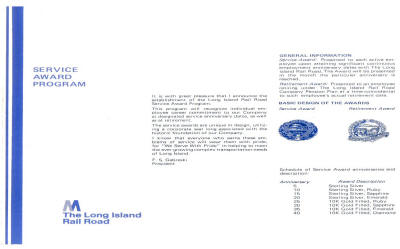 Awards using the original LIRR 1834 herald: Service Award Program: (5, 10, 15, 20, 25, 30, 35, 40 Year Pins) |
"It is with great pleasure that I announce the establishment of the Long Island Rail Road Service Awards Program. This program will recognize individual employee career commitment to our Company at designated service anniversary dates, as well as at retirement. The service awards are unique in design, utilizing a corporate seal long associated with the historic foundation of our Company. I know that everyone who earns these emblems of service will wear them with pride for "We Serve With Pride" in helping to meet the ever-growing complex transportation needs of Long Island" - F. S. Gabreski, President (1978-1981) Material presented here courtesy of: RMLI - Mike McEnaney, Research
and Don Fisher, President |
|
|||||||
|
Service pins past five years had
stones on the center bottom, also: -Five years, no stone, flat gray
metal -Ten years, metal the same, but with ruby stone -Fifteen
years, with blue sapphire(?) stone |
|||||||||
 |
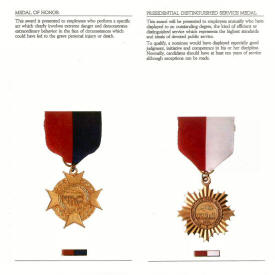
Presidential Unit Citation Award |

Commendation Medal - Knowles Taylor (First LIRR
President) Award
|

Ralph Peters Award of Achievement (24 year former
LIRR President) |
||||||
| LIRR Jewelry | |||||||||
 Tie clip with the original 1834 herald. Awarded for 35 years of service. Archive: RMLI
|
 LIRR Keeping Track - October 2001 |
 WTC lapel pin in commemoration of the World Trade Center 9-11 Victims Collection: Bob Myers |
 L.I.R.R. semaphore tie clip - Archive: RMLI |
||||||
| LIRR Apparel | |||||||||
 |
 |
 |
 |
||||||
| Ties issued to female train personnel: Conductors, Assistant Conductors, Collectors, etc. | |||||||||
 Scarf issued to Ticket Agents & Clerks.
Material/Photos/Info: Bob Myers |
 American flag items issued for a short period of time in honor of 9-11. |
 |
 |
||||||
| LIRR Keystone Number Plates | |||||||||
 |
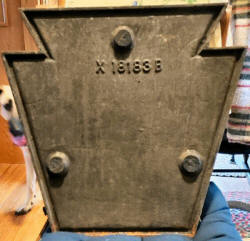 |
 G5s #44 passing New Hyde Park in 1947 Photo: Harry Trede |
Keystone number plate
conversion Oct.- Dec. / 1942 |
||||||
|
The #44 went to scrap in Modena, Pa., wearing all its plates and marker lights. Quite a few LIRR Consolidations and G5s' wound up wearing all their jewelry with the exception of whistles, which were bronze. The three lugs on the back of the plate were normally attached with bolts inside the smokebox door. In this case, each was sawn halfway through with a hacksaw, then either burned or simply broken off to complete the cut. The paint on this particular plate has become infused with carbon or another source of dirt, yet appears to be original. Surviving LIRR steam plates include 35, 36, 38, and a reproduction of 39. Research: Richard Glueck |
|||||||||
 Keystone #40 auction - 11/15/2022 |
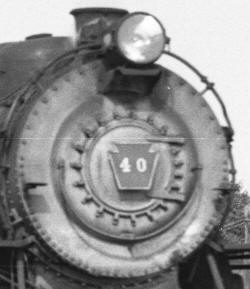 |
 G5s #40 Train #4619 westbound at Merillon Ave., New Hyde Park 7/13 1947 Photo: George Votava Archive: Dave Keller |
|||||||
| LIRR Trust and Builder Plates | |||||||||
 "Irving Trust Company, Agent Owner" Trust plate LIRR P72 #2921 07/28/1962 Dave Keller Archive |
 "METROPOLITAN LIFE INSURANCE CO., OWNER AS ASSIGNEE OF PULLMAN-STANDARD CAR MF'G CO. MANUFACTURER AND PRIOR OWNER" Photo: George E. Votava, Archive: Dave Keller
|
 2-8-0 Class H10s ALCO Builder Plate PRR #9742 Built: 6/1916, The LIRR acquired this engine from the PRR 1928-30 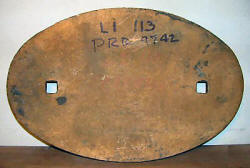 |
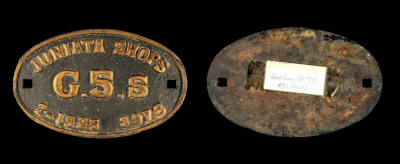 LIRR G5s #28 4-6-0 Builders Plate #3978 built 02/1925 from Juniata Shops at Altoona, PA. Weighs 5 lb 5 oz measuring 11 5/8 X 7 3/8" from the collection of the late Ed Conklin III
|
||||||
| LIRR Patches & Badges | |||||||||
 LIRR MOE (CAM) patch c.1970+ |
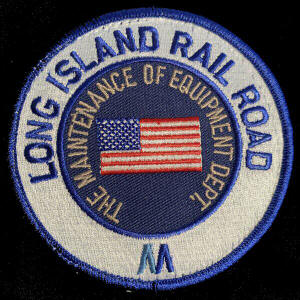 LIRR MOE (CAM) patch c.2002 issued in honor of 911. CAMS or Car Appearance Maintainers older terminology "Coach Cleaners". |
 LIRR Passenger Services patch Archive: Steve Melrose |
 LIRR Passenger Representative patch Archive: Steve Melrose |
||||||
 MOW Department Uniform patch Archive: Steve Melrose |
 Transportation Department Uniform patch Archive: Steve Melrose |
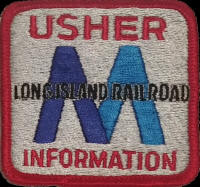 LIRR Usher Information patch Archive: Steve Melrose |
 LIRR Hat patch Archive: Steve Melrose |
||||||
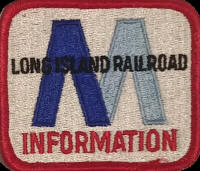 LIRR Information patch Archive: Steve Melrose |
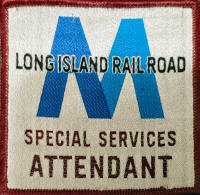 LIRR Special Services Attendant Patch Archive: Steve Melrose
|
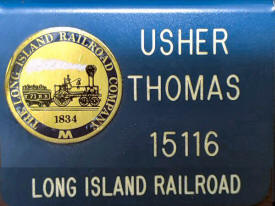 LIRR Usher Badge 1984 Archive: Steve Melrose |
|
||||||
|
The blue badge with the LIRR 1834
logo was revived with the LIRR 175th Anniversary back in 1984 and dates
from 1984 to 1989. I remember that Ticket Agents/Clerks were required to
display the badge with their first name Employees immediately
complained that access to their names resulted in a barrage of malcontent
patrons' harassment of them at home.
Their first name and IBM Number was then substituted and replacement
badges arrived. Since the employee's IBM Number served as his account
number at the LIRR's credit union, employees then feared that public
access to that number compromised their personal savings accounts. The
unions petitioned the Carrier, who complained that employees' huge life
savings were at risk and the badges were dropped. They were never widely
used, and no attempt was made to require their use in most crafts. |
|||||||||
 LIRR System Safety patch Archive: Steve Melrose |
 LIRR Fire Marshal patch Archive: Steve Melrose |
 LIRR Fire Safety patch Archive: Steve Melrose |
|||||||
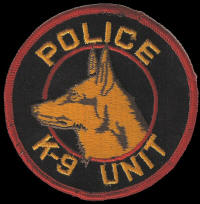 LIRR K-9 Police patch c.1970 Archive: Yardgoat |
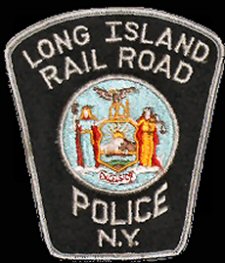 LIRR Police patch c.1970-1980 Archive: Yardgoat |
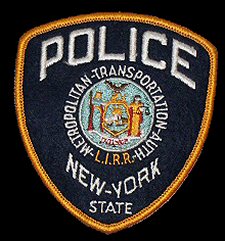 MTA-LIRR Police patch c.1980-1998 Archive: Yardgoat |
 MTA Police patch c.1998+ Archive: Yardgoat |
||||||
| LIRR (Legion of Influential Rail Riders) | |||||||||
 Legion of Influential Rail Riders "units" (points) coupons |
The
Legion was part of the early 1960's upgrade and PR campaign of the
Goodfellow era which aimed to improve facilities and put a more human
face on the railroad after years of terrible service and run-down
equipment. By the time I started selling tickets in July 1963 the program had run it's course. Archive/Info: Brad Phillips
|
||||||||
|
|
|||||||||
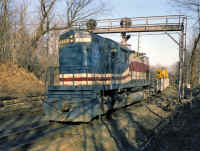 C420 #229 in Smithtown April 1982 worktrain during the welded rail installation on the PJ branch.Photo: Mike Koehler |
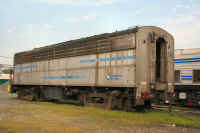 Alco FA-2 #608 The LIRR chopped the cab off and converted it for use as an HEP unit with the C1s. Recently moved to Morris Park for rebuilding as a mobile generator Unit #3100 |
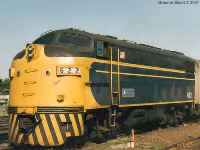 LIRR Power Pack EMD F7Am #622 Built Nov 1950 Photo: Graeme Skeet 1992 Speonk, NY "m" designation indicates modified from original condition: G. Skeet |
|||||||
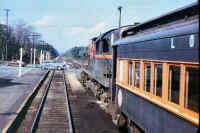 C420 #216 Speonk c. 1964+ Photo: Steve Hoskins |

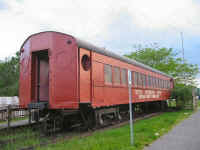 Visitor Center LIRR Ping Pong Car on south side Long Island Expressway (I-495) Views SE and SW Photo: Paul Strubeck 2006 P54D 7921. From the Bob Emery roster: 7921 saved for preservation and stored until 4-1976. Repainted tuscan red with black roof and gold leaf lettering and renumbered back to 921 for use on Heritage Train from 5-1976 to 8-1976. Stored on Track 1, Flatbush, NY |
 Newsday Article 08/22/1966 Engineer's View of Dangerous Conditions Newspaper article courtesy of Thomas Collins |
|||||||
 Mill Neck Station c. 1914 Archive: John Hammond |
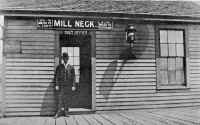 Mill Neck Station Archive: John Hammond |
 LIRR turbine car laid up on the north leg of the wye prior to the sheet metal shed being built for the 2nd turbine that arrived a couple of years later. View NE c.12/1966 Photo/Archive: Tom Harmon Info: Dave Keller |
|||||||
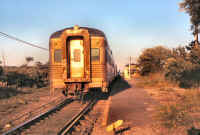 August 22, 1969: A late summer afternoon sun lights up FEC's Lake Okeechobee on the rear of LIRR train #22 at the west switch of WH. In that first summer of all lightweight "parlors", #22 was the "City of Everywhere" with surplus sleepers/lounge cars used as parlors cars from at least five different railroads. Photo: Richard F. Makse
|
 MU #2509 Two car train Princes Bay, Staten Island 04/28/1973 Back in the early 1970s, the LIRR loaned or leased six (6) MU cars to the Staten Island Rapid Transit for their use. These two LIRR MU cars are seen in SIRT service, stopped at Princes Bay station on Staten Island on April 28, 1973. The LIRR never had any stations that looked like this structure and located in a cut. Also . . . . check out that shelter shed across from the depot building! Certainly not “Pennsy style!” Archive/Info: Dave Keller
|
 LIRR FA1 #616 westbound at Old Northport Junction on 2/26/77. Old Northport spur branched off to the left. All traces of it are long gone. (William Madden photo, Dave Keller archive)
|
|||||||
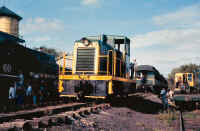 On September 5, 1965, Black River & Western #400, ex-LIRR 400, switches on the passing siding at Ringoes on the PRR's Flemington Branch. The 400 was sold for scrap in 1963 and made its way to the BR&W in 1965. It's now at the Connecticut Eastern Railroad Museum in Willimantic. This 44 tonner was purchased by the LIRR primarily to switch EX Yard in Flatbush Ave where it was able to negotiate the tight clearances along the platforms. BRW60, on the main track at Ringoes, would be the last steam locomotive to operate on LIRR rails when it came to Long Island on November 26, 1967. Photo: Richard F. Makse |
 North Shore Line CNS&M (Chicago North Shore & Milwaukee) Cincinnati Car Co. built 1924 as observation trailer car/converted to coach and in storage at Richmond Hill, LI April, 1964. It was owned by the Trolley Museum of NY and in 1974 it was sent to Wisconsin Electric Ry Museum who sold the car in 1984 to the Escanaba & Lake Superior RR in Wells, MI where still resides today. Info/Archive: Jim Gillin |
Visible on several different portions of the LIRR. Along the main line between Harold and Mineola, the Port Washington Branch, the Montauk Branch to RVC/Freeport, and even on the abandoned Rockaway Beach Branch. |
|||||||
|
|
|||||||||
|
LIRR Usher Cap Badge Badge Evolution |
|||||||||

1971 thru c.1982 Some lettering black, some lettering light blue, some lettering dark blue. Worn with the MTA blue uniform. |
Ushers worked at all 3 major
LIRR terminals: NY Penn, Flatbush Ave and Jamaica. Duties:
Announce trains arriving and departing over the loudspeaker. |
||||||||
| P72 #2937 Restoration | |||||||||
 LIRR #2901 Modernization #2 builder photo LIRR #2937 Modernization #147 restoration Steam-type or Diesel-hauled cars series numbered 2901-2925 = Modernization numbers 2-26 2926-2980 = Modernization numbers 136-190 Info: Steve Lynch |
This car is in the "as-built" color scheme. The modernization numbers (red and yellow circles) were applied when these cars were new "as delivered" in 1955-56, to make the public aware that each was a fresh, new car for their riding pleasure. Note that the modernization number on the new Pullman-built cars like this one (red circle with yellow rim and numbers) is the color-opposite of that used by LIRR on the older cars which were overhauled by the railroad shop (tile floors, vinyl 3/2 walkover seats, recessed liteing fixtures, new outer doors) and given yellow circles with red rim and numbers when they were shoved back into service (usually with a new number, like 7000 added to the old original number, so, for example, ping #2 became #7002). The modernization numbers lasted about 15 years, until the next repaint. Art Single This car s not owned by HVRM, but rather by Island Rail Preservation LLC. It is on lease to the museum. The car roof is brunswick green roof, with the color matched to PRR drift cards for an exact match as I painted it. The underbody, per LIRR spec, is gloss black. Mike Koehler
|
||||||||
 LIRR #2937 location is north of North Judson, IN, on 6/19/11. Northbound (RR West) around 4:30 central time making a leisurely 15mph. Photo: Tad Dunville |
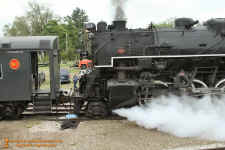 Hoosier Valley Rail Museum NKP #765 Switching LIRR #2937 |
 LIRR #2937 in action |
|||||||
| Bar Generator Cars | |||||||||
|
Bar Generator cars, Class BG72B in the 2101-2104 series, which had a large diesel generator installed inside a large compartment in the carbody, with a bar in the other end of the car located mid-train. These cars had large vents in one side of the car body. These were rebuilt from MP72T coaches while the railroad was converting to push-pull operations. The primary purpose of these 4 cars was to provide HEP (600 VDC) via trainline to push-pull equipped coaches in trains that did not have a cab control powerpack unit or an MP-15AC to provide HEP. The Bar Generator cars were equipped 2 gensets. The engines were Detroit 8v71's rated at 318hp equivalent to 237 KW electric power output. So, the car could supply 474 KW of power for the HEP trainline. Info: Jack Deasy |
|||||||||
 LIRR #2103 Mineola 06/01/1977 Photo: Tim Darnell Note: The window sign that says "Coach Club Car" in script lettering. Info: Jack Deasy |
 LIRR # 2102 Bar Generator car laying over in the Montauk Yard, between trips, 1976. Photo by “Railfan Ed." |
 These cars did not last very long, a few years at best. The cars could not handle the extra weight of the generator, and the constant rocking of the train made the floors sag, and outer wall of the cars eventually start to bulge out. They had to be taken out of service for safety reasons. Doc Emmet Brown |
|||||||
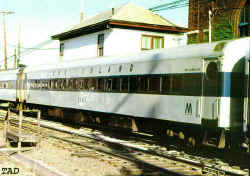 Bar Generator car #2101 passing Nassau Tower at Mineola, July 1978. Although this side of the car looks similar to other P72 coaches, the car is lettered BAR GENERATOR next to the vestibule doors, and the configuration of underbody equipment is different. Photo: Tim Darnell |
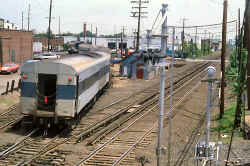 Bar Generator car #2103 is the rear car of a four car train, powered by a GP-38, heading eastbound to Oyster Bay, seen diverging from the mainline at Nassau interlocking, Mineola, in May 1979. The view looking down on the train shows the diesel exhaust vents in the roof of the Bar Generator car. Photo: Steven Rothaug Info: Jack Deasy |
 Train #212, The Shelter Island Express, seen at Hollis on a Friday evening circa 1968, has a baggage car being used as a bar car in the middle of the consist. Image extracted from “ALCO’s on the Island” video by Jordan T. Research & additional information by Jack Deasy. |
|||||||
 Bar generator car #2101 - LI City c.1980 Archive: Mike Boland |
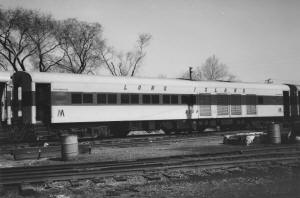 Bar generator car #2104 - Oyster Bay c.1980 Archive: Mike Boland |
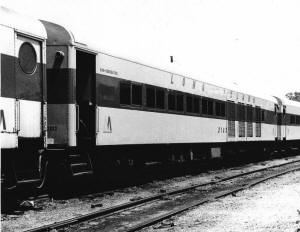 Bar generator car #2103 - Port Jefferson c.1980 Archive: Mike Boland |
|||||||
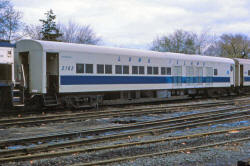 Bar generator car #2102 - Oyster Bay 11/1982 Photo/Archive: Jay Bendersky At
least one B/G car lasted long enough to be painted in the this, the
"low-tide", scheme. These cars were modified with internal diesel
generators. The generators would perform the same function as the power
packs, providing heating and lighting to the train. - minus the operating
cab. This car, along with its sisters, would soon be retired from service. |
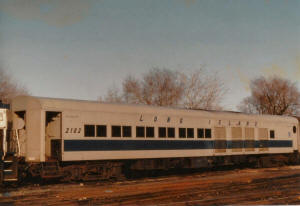 Bar generator car #2102 - Oyster Bay c.1980+ Photo: Henry Maywald Archive: Mike Boland |
||||||||
|
Two trains received MP-54
combines: #212 to Greenport and #12 to Montauk. There just weren’t enough
bars to go around. The “beer well” consisted of a 55 gallon oil drum
(relatively cleaned up) and lined with plastic and lined-plastic brown
bags. This was used to chill the beer. Two more oil drums served as the
“bar”, with a piece of Formica-covered plywood placed over the drums to
support what was essentially a bar-cart sized inventory. I don’t remember
working one of these but they were awful too look at. |
|||||||||
|
There were other reasons they were not popular. At Hunterspoint Ave., they would shut down on cue due to lack of ventilation. The generator would frequently catch on fire too. One bar generator was regularly assigned trains 605/658 for many years and was actually operated as a bar in the afternoon. Pt. Jeff had four regular bar cars, plus bar carts which would detrain at Huntington. Train 664 did have a bar into the C3 era, but unsure if it still operates. BTW: The Special Service Department always made a net profit (and I believe still does). While Metro North continues to operate bar cars, they were de-emphasized on the LIRR (along with true parlor cars) so the carrier could concentrate on their "core business". Info: Ben Jankowski |
|||||||||
|
FRA DOTX216 TRACK GEOMETRY CAR ON THE LIRR The DOTX216 is a converted Amtrak Metroliner coach equipped with a track geometry measurement system, a rail profile measuring system, a multi-car ride quality measuring system, and other state-of-the-art instrumentation for conducting railway research. DOTX216 is capable of making track measurements at speeds up to 165 mph and serves as a high-speed track research instrumentation platform for a variety of tests and research projects in the Office of Research and Development. DOTX216 is also used to support efforts undertaken by the FRA’s Office of Safety. US Dep't of Transportation - Federal Railroad Administration |
|||||||||

 LIRR #157 and #153 with the FRA DOTX216 test train at Beth Interlocking 1/29/2010 - Photo/Archive: Joe Tischner |
 DOTX car #T-16 prior to renumber DOTX216 |
 DOTX216 eastbound at Center Moriches 9/19/2024 Photo/Archive: Dave Barraza |
|||||||
| LIRR G-5 #35 move out of Eisenhower Park in East Meadow, LI on June 17, 1978 | |||||||||
 |
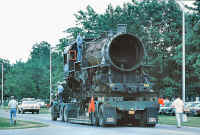 |
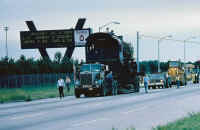 |
|||||||
|
Here are some photos I took of the move of LIRR G-5 #35 out of Eisenhower Park in East Meadow, LI on June 17, 1978 Some of you may recognize a few of the people in the photos. I could not even drive that day. I was only out of the hospital a short time after having my appendix removed. My Mother drove me because I had to see and photograph this event. Photo/Info: Jim Gillin |
|||||||||
| Goodwin Gallagher Sand & Gravel | |||||||||
 Goodwin Gallagher Sand & Gravel retail facility on the East River about 1/4 mile north of the Queensboro Bridge. Goodwin - Gallagher "mined" sand from Port Washington and the sand was used to pave New York City streets. Upon receiving the images, I subsequently created a webpage: Goodwin Gallagher Sand & Gravel provides further details; Locomotives Roster, Tugboat Roster, etc. The four stacked industry behind everything, is the Manhattan Power Plant on York & 75th Streets. I've also been in contact with Judith Byrdie, who is historian of the Roosevelt Island Historical Society, and confirms that is the steeple of the Chapel of the Good Shepard , the white porched structure is the "Alms Homes". She has seen other images looking east in the Astoria Historical society that shows a frontal view of the sand dealer, but no one has responded to my inquiries as yet to obtain an copy of the image. The photo was taken 06/06/1917 and according to Judith Byrdie, was originally part of the Transit Museum holdings as the neg identification codes match other negs and images used by the Transit Museum surveyors. She believes they were either surveyors photos for the subway tunnel projects or works in progress recordings. The 1920 issue of "MVUS" (Johnson's Merchant Vessels of the US) lists 4 powered vessels for Goodwin-Gallagher Sand and Gravel Corp., 551 Fifth Avenue, NY Collection: Roger McEnery, Research: Philip M. Goldstein |
|||||||||
| Luzerne Coal | |||||||||
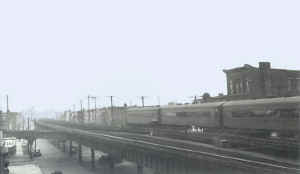 View looking West along Atlantic branch. Luzerne Coal Co. elevated siding/trestle branching off at the left to cross the street. Archive: Art Huneke |
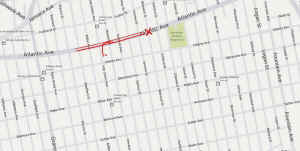 R. Emery map indicate siding and
switch connecting it to the main were removed in 1942 along with |
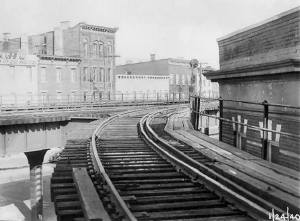 View looking NE at track level from the Luzerne Coal Co. elevated siding/trestle. LIRR Atlantic branch beyond. Archive: Art Huneke |
|||||||
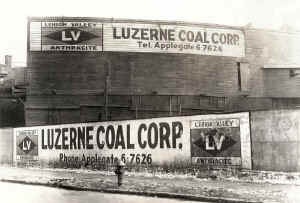 Luzerne Coal. Co. |
 View looking East: LIRR elevated viaduct at left. Elevated siding crossing Atlantic Ave. Luzerne Coal. Co. structure at right. Archive: Art Huneke |
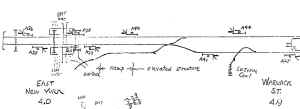 Henry Wilhelm map c. late 1920's East NY Warwick St Luzerne Coal Archive: Art Huneke |
|||||||
| LIRR Milk Cars | |||||||||
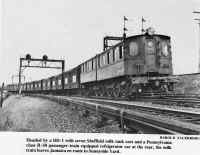 DD1 with the string of milk cars with caption is by Harold Fagerberg From: Electric Heritage of the
The
LIRR Milk Car Mystery
Solved
|
 The Sheffield Farms cars are a publicity photo of cars built for From: Electric Heritage of the
|
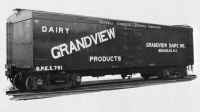 The Grandview Dairy car is a builder’s photo, judging by the typical masking of all background and the roster shot of a nice, shiny, new car. Source: Carstens Publications From: Electric Heritage of the Grandview Dairy car, was
a Pfaudler tank car. Pfaudler started making these cars in the
1920s. My December, 1930 ORER shows 105 cars in the GPEX, 40
foot (inside dimension), 6,000 gallon milk tank car series
numbered 700-804. 1905 June ORER (Official Railway Equipment Register) has no milk car listing(s), although there are 12 box cars with numbers between 3000 and 3019. 1915 ORER , however, lists seven "under 60 ft." milk cars numbered 3350-3356, 3408, & 3434, which probably means LIRR 3000 and siblings arrived somewhere between 1915 and 1919. I've found them also listed in the 1919 ORER. Westerfield points out that "the XM class was also produced, identical to the RF but without ice bunkers." The photo on Steve Lynch's website *see above) appears to show a car without ice hatches, which would have been fairly typical of a milk car. The LIRR car then would probably have been an XM, rather than an RF. Both were based on the XL series box cars, which had that fishbelly underframe. Info: Walter Wohleking 1926 ORER shows 15 milk cars numbered 3000
to 3014 in the "passenger car" listing.
|
|||||||
|
Polo Grounds 1940 IRT
Ninth Ave Line All text, photos, information, and research: Compliments Dave Keller except were noted. |
|||||||||
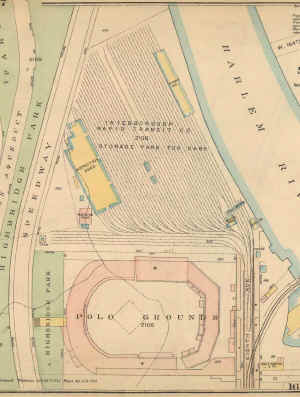 Manhattan area maps 1925, Plate165, IRT 159th Street This layout of the Polo Grounds stadium is an earlier version. The last and final version that everyone remembers is as it looks AFTER it was rebuilt. Info: Dave Keller |

IRT 3-car
shuttle EL train at the Polo Grounds station was taken in 6/28/40, the
9th Ave. portion of the EL structure at the left of the photo was
already out of service two (2) weeks but was not yet into the
demolition stage. That would explain why the area looks so
abandoned when it should be full of people and cars, etc. Info: Dave
Keller Archive |
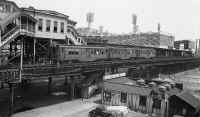 George E. Votava Photo, Dave Keller Archive
|
|||||||
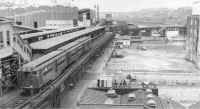 1941 Polo Grounds Shuttle Info: David Pirmann |
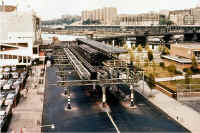 Elevated Line Polo Grounds truncated line 1950 Info: David Pirmann |
 Elevated Line Polo Grounds truncated line 1957 Info: David Pirmann |
|||||||
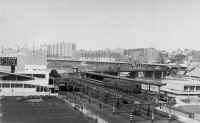 Elevated Line Polo Grounds truncated line 1950's Info: David Pirmann These photos and more at David Pirmann's site: www.nycsubway.org
|
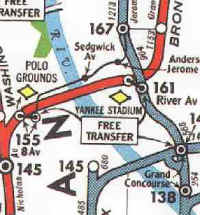 Elevated Line Polo Grounds Shuttle Map Info: David Pirmann |
 Elevated Line Polo Grounds Shuttle Map Info: David Pirmann |
|||||||
|
The 9th Ave. EL was torn down in 1940. The 2nd Ave. EL lasted until 1942. Info: Joe Hagan The short portion that is of the truncated section. See photos above. Dave Keller Unification
of the privately owned transit lines with the Independent City-Owned
Rapid Transit Railroad (IND System) occurred in June of 1940.
Municipal operation of the IRT would begin on June 12th, 1940, two
weeks after the City of The
shuttle ran from The
"Polo Grounds Shuttle", as it was called, saw little
patronage because of the redundant IND Concourse Line running so
closely nearby. In addition, the New York Central's Putnam Division
stopped running, and in 1957, the Giants played their last season in
the Polo Grounds. With so little ridership, the "Polo Grounds
Shuttle" ceased operation at 11:59pm on August 31st, 1958. Source: David
Pirmann's site: www.nycsubway.org The Mets began playing there in 1962, but no one had planned for that back in 1958. They might have left the EL standing and shuttle running had they known this was going to happen. But, they had the underground IND train as late as those 1940 photos and it connected between there AND Yankee stadium as well as with the rest of NYC, so there really was no need for the EL Historical input: Dave Keller |
|||||||||
| LIRR Drumheads | |||||||||
 1976 American Freedom Train American Freedom Train Belmont Park Racetrack 7/31/1976 Photo/Archive: Paul De Luca |
 Rail and Sail Special Drumhead 10/21/79 Archive: Dave Keller |

Rail and Sail Special Parlor Observation #2082 "Asharoken" Greenport 10/21/79 Archive: Dave Keller |
|||||||
|
Cannonball Westhampton 08/29/2008 Photo: Mike McDermet |
 160th Anniversary Train Drumhead July 23, 1994 trip to Greenport to commemorate the 160th Anniversary, the LIRR had a drumhead on the head end. Archive: Dave Morrision |
 100th Anniversary Train Montauk 100th Anniversary October 7, 1995 Archive: Dave Morrision |
|||||||
 Cannonball 170th Anniversary 1834-2004 DE30ac #401 Cannonball Drumhead Closeup - Speonk 1999 (Collins-Keller) |
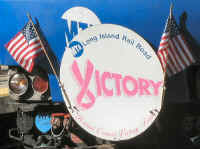 2007 Victory Train Victory Drumhead 9/19/2007 Mineola Photo: DE30415 |
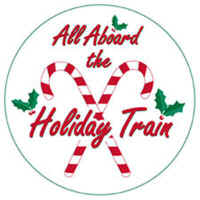 Christmas |
|||||||
 2009 175th Anniversary Train 175th Drumhead 7/25/2009 Riverhead Photo: Al Castelli |
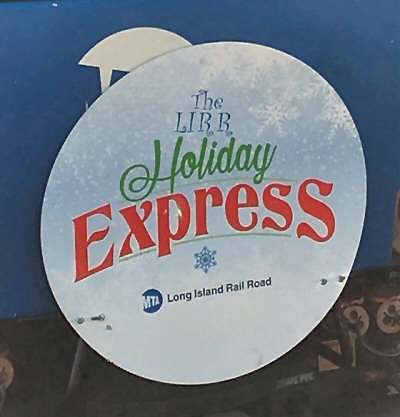 2016 Holiday Express |
 2024 190th Anniversary Train 190th Drumhead 4/24/2024 Photo: MTA/LIRR |
|||||||
| Sands Street Terminal | |||||||||
|
Sands
Street Terminal Another BMT EL, the Myrtle Avenue line, came into the terminal building on the upper level, entering in on one side to discharge passengers at platforms adjacent to the loop track which ran outside the building, so the train could run around the loop, then, stopping at another set of platforms on the other side of the building, pick up passengers before re-entering and passing through the building for the return trip. The
Fulton Street El which utilized the middle level of the structure also
had a spur that ran on the west side of the terminal, under the above
mentioned loop, and, after making a connection at Sands Street with
access to the large structure via a long, covered walkway, continued
on towards the Fulton St. Ferry. In later years, as the Besides
running trolleys at street level, the B&QT (Brooklyn & Queens
Transit), a subsidiary of the BMT created to operate all their street
lines, also ran cars at the middle level of the The
1939 view, below, looking northeast (due to the situation of the
tracks and terminal in relation to the bridge, the loop side of the
building facing west) shows a Peter Witt-type streetcar headed
eastbound off the bridge, approaching the terminal building. (The
connected trolley pole always trailed behind the car.) |
|||||||||
|
|
|
View looking east. Fulton Street EL line to the Fulton Street Ferry visible under the loop. View also shows the long, covered walkway to connect to the bridge station. |
|||||||
|
BAR Engines on
Long Island Railroad Research -
St. Maarten PLAYER
DEVELOPMENT - TRAINS authored by Roger,
age 10 Huh? A bar? I know the LIRR had parlor cars, and if you bought a drink and it came in a souvenir glass with Dottie the Dashing Commuter on it, and you got to keep the glass. But it didn't seem to me like there should be a bar in a locomotive. I am just a kid, but I was thinking that was a bad idea. Then I did some more reading, and I found out that BAR stands for Bangor and Aroostook Railroad, the trains from Maine. BAR was known for shipping potatoes, wood and paper. All that could be sent to Long Island, but most railroads kept their engines and just let the other railroads haul the freight cars with their own engines.
After the cooling off period, it was announced that an agreement had been reached. But both the LIRR and the Unions agreed to keep it secret. The Unions did say, “They got everything they asked for.” It was estimated about 10 percent of the commuting passengers never returned to the trains. They had found other ways to get to work and they stuck with their new routines. But the strike had caused another problem. Since the trains had been sitting idle for all those months, and they had not been well maintained during that time, when they tried to get it all back to full service, they found out that nine of their Alco switcher locomotives had frozen up as they were not properly drained before storage. Their engine blocks had cracked. The locomotives could not be used. Long Island Metro, the official LIRR employee newspaper, reported in issue 29, February – March 1973, that all nine of the damaged engines were scraped. So LIRR asked the Bangor and Aroostook Railroad if they could rent some engines. In all, eight BAR engines saw service on Long Island. LIRR also rented engines from Precision National. Three Bangor and Aroostook locomotives were sent on January 21, 1973: the GP-7s BAR 66, BAR 72 and BAR 74. BAR 66 would stay until March 10, 1976 while 72 stayed until April 6, 1977 and 74 returned to Maine April 22, 1977. Engines 62 and 64 were sent to Long Island on January 23, 1973. Both would stay on the island until March 10, 1976. Engine 60 and 65 was sent to LIRR on April 1, 1974 and would stay until March 10, 1976. The last loaner engine, BAR 69, was sent on May 18, 1974 and it would stay in service until April 22, 1977. The Maine Railroad was happy, the lease was a good deal for BAR. They had bought a lot of powerful locomotives for their busy season which had been all about the shipping of potatoes during the winter. In 1969 BAR sent the potatoes in heated box cars to the interchange run by Penn Central. New York Central and the Pennsylvania Railroad had recently merged. In the past, the yard crews keep the box car heaters fueled and running until the cars continued their journey. This year not. The crop was ruined. It would be 40 years before Maine famers would once again ship potatoes by rail. Just to give you an idea of how important potatoes were to the railroad, the 1949 Maine harvest yielded 46,856 boxcar loads of crop. The potatoes were shipped all over the United States. Some were taken to the shipping port and sent off on cargo boats across the Atlantic to Europe. Belgium got 246 boxcars of potatoes and Germany got 1,458. Spain got a lot of Maine's potatoes too: 4,042 boxcars full! So when the potatoes business came to an end, BAR had extra engines. So they were glad to rent them out. But, do not worry they did not lay off the engineers or even rent the crew to the LIRR. I learned that when a train has a lot of cars it may take two, three or even four engines to pull the load, but they still just need one engine crew. The engines are connected together and operated from the lead unit. Oh and when I went back and looked at the book I realized I had seen several BAR engines but they were painted blue and I just thought they were LIRR. It's interesting to learn about all these things that happened back then. And just so you remember the LIRR did not have Bars in their engines. |
|||||||||
|
|
|||||||||
| Leased BAR Engines | |||||||||
 BAR #66, #64 Jamaica 12/1973 Photo: Frank Zahn Archive: Mike Boland |
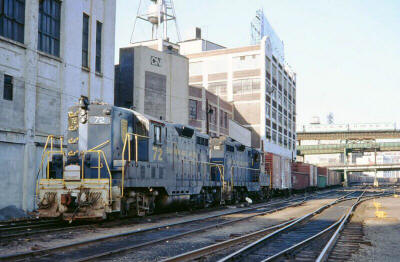 BAR #72, #66 LI City 1975 Photo/Archive: Brian Woodruff |
 BAR #69 GP7 Morris Park 1974 |
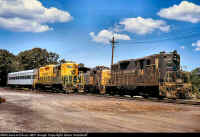 BAR #74 Ronkonkoma Wye Photo: Brian Woodruff  BAR #72-#74 Holban |
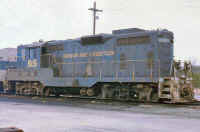 BAR #65 Ronkonkoma |
|||||
 Leased Locomotive Roster John Scala |
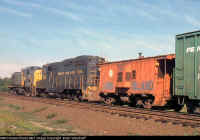 BAR #74 GP7, LIRR #1520 RS2, and LIRR C68 8/01/1974 Photo: Brian Woodruff |
 BAR #74 and PNC #1506, double heading a westbound LIRR freight at Holban Yard, Hollis 10/16/1976 Photo: George E. Votava Archive: Dave Keller
|
 BAR #64 GP-7 Precision #1702 GP-9 LIRR #1551 RS-3 view NE c.1972 Ronkonkoma Photo/Archive: William H. Birkholz 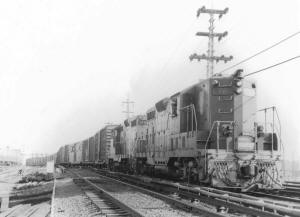 BAR #72 PNC #1701 at Jamaica 11/10/1976 Photo: Frank Zahn Archive: Mike Boland |
||||||
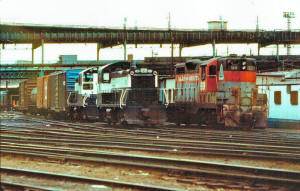 BAR #69 GP7, LIRR #101-103 SW1001 at Sunnyside 4/01/1977 Photo/Archive: Tim Darnell |
 Bangor and Aroostook # 64 and #74 climb Mt. Olivet grade on the Montauk Branch with a midday transfer run from Yard A to Holban. This view is on Montauk #2 at Flushing Avenue, Maspeth undergrade bridge, immediately west of Welbilt Stove. 6/12/ 1974 - Photo/Archive: Richard F. Makse |
 BAR #60 Conductor Robert M. Emery at Greenport 5/09/1975 (Ziel-Boland) |
|||||||
|
|
|||||||||
| Leased PNC Engines | |||||||||
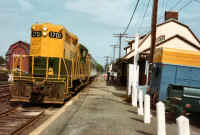 PNC #1701 Train #211 Riverhead Station view E 8/28/1974 Photo: Bob Bender |
 PNC #980 with LIRR number boards Train #202 at Ronkonkoma wye - Engineer C. B. Read view N 11/11/1975 Photo: Bob Bender |
 PNC #1506 at Ronkonkoma wye view NW 11/07/1976 Photo: Bob Bender |
 PNC GP7 #1505 LI City 11/21/1976 |
||||||
 PNC #1701 Greenport 8/28/1974 Photo: Bob Bender |
 PNC GP10 #980 coupled to the one-car Greenport "Scoot" and is laying up eastbound in front of the crew shanty in Ronkonkoma yard on Friday, November 26, 1976. William Madden photo, Dave Keller archive |
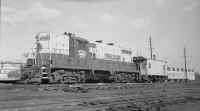 PNC #1503 GP7 with LIRR Hack C51 laying up against the |
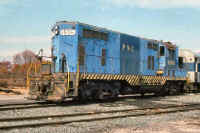 PNC GP7 #1506 Ronkonkoma 1976 |
||||||
 Precision (PNC) #1701 - Morris Park 8/1974 Source: eBay |
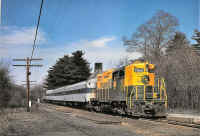 PNC #1706 westbound Train #533 at Mill Neck 3/1975 Archive: James Scullin |
 PNC GP9 #1701 Pine Aire 7/21/1974 Archive: Brian Woodruff Two PNC GP9s, an RS3 and an RS1 on a power balance move, shown here in the siding at Pine Aire. PNC #1701 was ex-C&O 5918, later C&NW 4448. Info: Vincent J. Benkovitz |
 A quartet of the Precision Geeps (1505, 1706, 2 others) heading upstairs at FREMONT to pick up cars from Conrail, less than a year old at this point. February 27, 1977. Photo: Fred Wilczewski Collection: Dietrich Ryan |
||||||
|
|
|||||||||
| Leased Reading Engines | |||||||||
 Reading leased #469-470 c.1970 Photo/Archive: Richard Glueck |
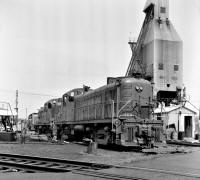 Reading #469-470 leased Morris Park c.1970 Photo/Archive: James Mardiguian |
||||||||
|
Reading leased RS3's #469- #470 in the late 1960's. Lacking ASC, they spent their time mainly as trailing units and on jobs between Holban and Long Island City via the Montauk Line. Info: James Mardiguian |
|||||||||
|
|
|||||||||
| Pennsylvania Station, NY City | |||||||||
|
|
|
||||||||
 PRR Station, NY City 1962 Concourse where the current Amtrak waiting room is located. Prior, there was a Main waiting room, and a Concourse. The Main waiting room was approx. where the rotunda is now. Archive: Bob Anderson |
 PRR Station, NY City View from the Main waiting room towards 7th Ave. New escalators now lead to the taxi area. Archive: Bob Anderson |
 PRR Station, NY City Main waiting room looking across from 31st Street to 33rd Street, where the rotunda now is located. Archive: Bob Anderson
|
|||||||
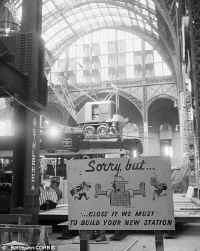 "Sorry, but...Close it we must to build your new station" 1963 LIRR Demolition sign in NY Pennsylvania Station to make way for Madison Square Garden |
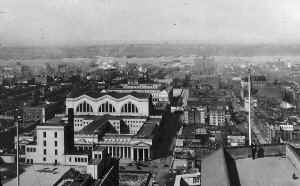 |
The relatively new Pennsylvania Station is viewed looking west from an upper level of a building across the avenue on a chilly day in November, 1912. The old building at the lower left would be replaced by the famous Pennsylvania Railroad-owned Hotel Pennsylvania which opened on January 25, 1919 and which copied its fascia architecture from the terminal building across the avenue. Both the terminal and the fascia of the hotel were designed by the same architectural firm. Behind the terminal is the General Post Office building and in the distance, a steam ferryboat plies the Hudson River with the many docks and the Jersey shore beyond. At the right, a man dressed in a suit and wearing a derby hat stands on a lower roof. To the left of him, and across the avenue, are two signs advertising theatre shows. The Winter Garden Theatre is hosting the performance of "The Passing Show of 1912" which ran from July to mid-November, 1912 and the Casino Theatre is hosting "The Merry Countess" which ran from August to December, 1912. This image would have been photographed sometime between August and Mid-November, 1912 based upon those dates of performances. The crisp quality of the smoke from building stacks in the distance identifies the air as cold, so this image would favor the November end of that photographic window. (Dave Keller archive and data) |
|||||||
| LIRR 1955 Transitional Steam Phase Out | |||||||||
 Alco RS1 #461, G5 01/23/55 Oyster Bay Photo: Norman E. Kohl |
 Budd RDC RS1, S2 #464 & #455, G5s #28 Patchogue Yard 1955 Dave Keller Archive |
 Port Jefferson 10/02/1955 Photo: Robert Emery, Art Huneke Archive |
|||||||
 Operation Changeover 10/081955 |
LONG
ISLAND RAIL ROAD STEAM FINALE
OCTOBER 1955
OPERATION CHANGEOVER 10/08/1955 THE DAY THE MUSIC DIED OCTOBER 16, 1955 Follow the links above to aRRt's Archives for more final steam action
|
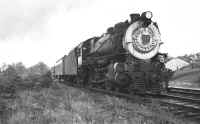 LIRR G5s #35 Last Day of Steam backing onto Wye at Port Jefferson 10/16/1955 Archive: Dave Keller |
|||||||
| LIRR Wantagh Station Preserve Park | |||||||||
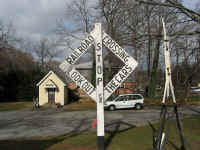 LIRR diamond crossing sign Wantagh 12/04/2007 Photo: Al Castelli |
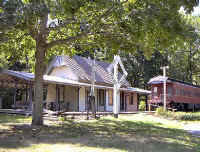 Wantagh Station 2000 Photo: Bob Anderson |
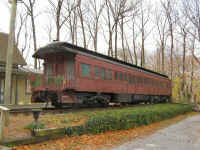 LIRR P2000 Jamaica Wantagh 12/04/2007 Photo: Al Castelli |
|||||||
| Freight Schedule with LIRR at Fresh Pond with NY,NH&H RR | |||||||||
 |
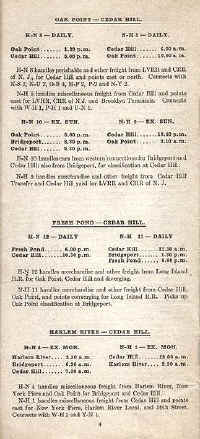 |
The NY, NH & Hartford RR Scheduled Freight to Fresh Pond via Cedar Hill. Twice Daily April 28, 1929 Collection: John Fusto |
|||||||
| LIRR GTE-1 and Garrett Gas Turbine | |||||||||
|
These cars did look like the M1s but
had a different configuration along the roofline, probably due to whatever
special equipment the unit contained. They also had "DOT" logos on the
cars (Dept. of Transportation). |
|||||||||
 Garrett Gas Turbine Ad
|
 Article on Gas Turbine test August, 1967 Archive: Paul Strubeck
|
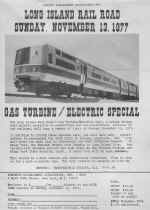 LIRR Gas Turbine Tour Special 11/13/1977 Sign up Form
|
|||||||
| LIRR Matchbooks - World's Fair Era 1964 | |||||||||
 Saddle Reads "N.Y.'s BEST ON-TIME RECORD", Inside Is Printed: "L.I. ... THE NATION'S FASTEST WAY HOME" Diamond Match Co., New York, NY |
 " THE BEST WAY TO THE WORLD'S FAIR" Universal Match Corp. |
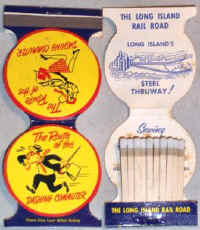 "Serving LONG ISLAND'S SMARTEST TRAVELERS" Universal Match Corp. |
|||||||
| LIRR Cups, Glassware, Mugs etc. | |||||||||
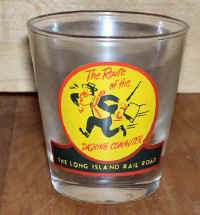 Dashing Dan tumbler manufactured by Libbey 3” diameter at top, 2” at bottom, 3 5/16” high. The logo is 2 1/4” high if authentic. Info: Richard F. Maske |
 Dashing Dan tumbler 1959 LIRR 125th Anniversary |
 Corbin's Cellar plastic cup c.1985-1988 |
|||||||
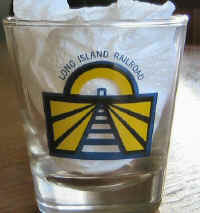 LIRR M1 tumbler front/back Collection: Joe Saullo |
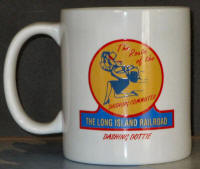 Dashing Dottie mug |
 LIRR Mail & Ride plastic drinking bottles Collection: Dave Morrison |
|||||||
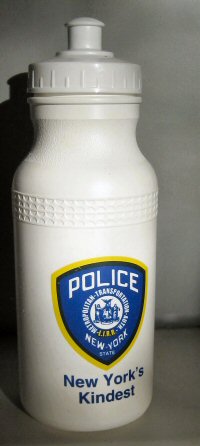 LIRR Police plastic drinking bottles Collection: Dave Morrison |
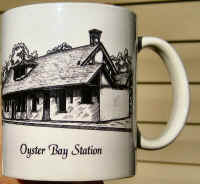 Oyster Bay Station Mug Collection: Dave Morrison
|
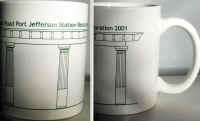 2001 Port Jefferson Station Restoration Mug Collection: Dave Morrison
|
|||||||
| LIRR Buttons | |||||||||
 10/25/1913 Port Washington Electrification Service Celebration |
 |
 |

 |
||||||
 |
 |
 |
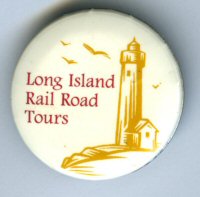 |
||||||
 LIRR 150 Years |
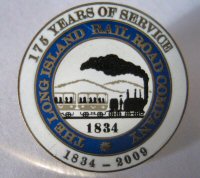 LIRR 175 Years |
 LIRR 190 Years 4/04/2024 Archive: Gary Farkash |
 LIRR Dog - Roxey 1901-1913 Archive: Gary Farkash |
||||||
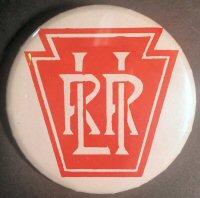 |
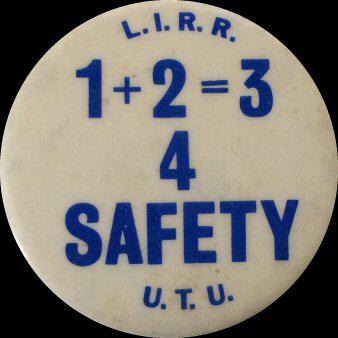 |
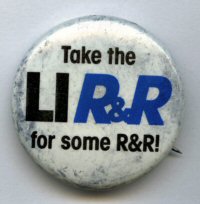 |
 |
||||||
 Dump McIver" Union led campaign button - LIRR President Bruce C. McIver: 1985-1989 that was forced to resign in 1989 after commuter rebellion as reported in the NY Times |
 |
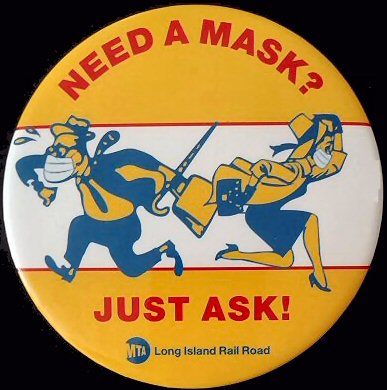 LIRR "Need A Mask" pin 2020 Photo/Archive: Steve Melrose |
|||||||
| LIRR Dashing Dan Lighter | |||||||||
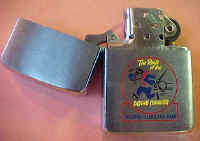 LIRR Dashing Dan Zippo Lighter - open |
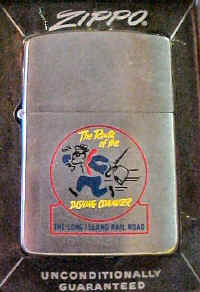 LIRR Dashing Dan Zippo Lighter -boxed |
||||||||
| LIRR Pins | |||||||||
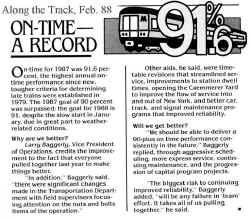 |
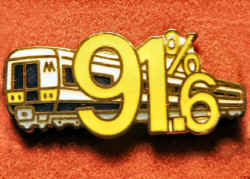 |
 |
|||||||
| NY Cross Harbor RR NY Cross Harbor Railroad | |||||||||
 NYCHRR #22 Bush #2 Float B ridge at 51st. Street, Brooklyn, NY |
 NYCHRR #22 & #21 Bush #2 Float B ridge at 51st. Street, Brooklyn, NY |
 NYCHRR #22 rounding the curve coming back from the SBK Interchange |
|||||||
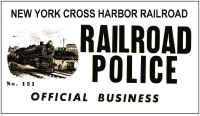 Photo Credit: Unknown.
NY
Cross Harbor Railroad All photos from 1991 with captions provided by Paul Strubeck unless noted.
|
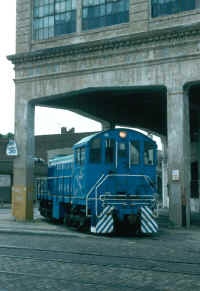 NYCHRR #22 cutting through the Bush Terminal Warehouse at 41st Street & 2nd Ave, , on way to SBK Interchange |
 New York Cross Harbor SW1200RS #1337 at Bayonne, NJ - 10-2-98 . . . . nice view of the WTC Twin Towers to the left of the diesel! Richard Louderback photo, Dave Keller archive |
|||||||
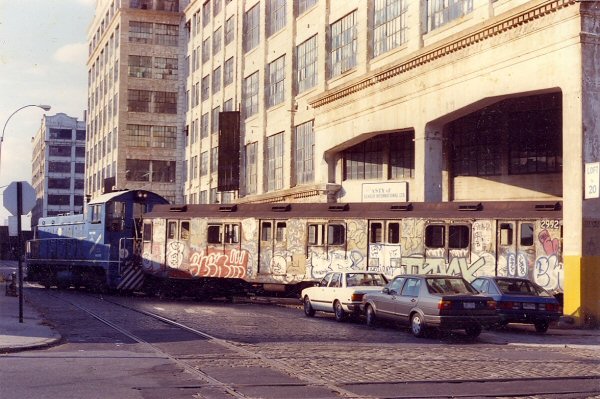 NYCHRR EMD NW-2 #58 movement at the Bush Terminal Warehouse NYCT ACF R10 #2992 at 41st Street & 2nd Ave, Brooklyn. Engine is on 41st Street c.1990 Archive: Wayne Koch |
 NYNJ Rail McAllister tug 06/17/200 Photo: Brad McClelland |
||||||||
| The Brick Mystery Building at Bliss | |||||||||
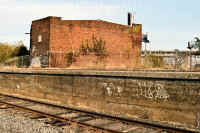 The building in question. Abandoned... Photo: Henry Wagner |
 Current aerial view 2009 North is to the right. |
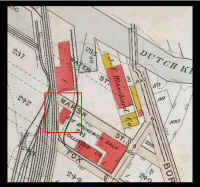 Marsh Street detail map area now 29th Street showing The Brunswick Balk Collender Co. |
|||||||
| Flushing Bridge Street Station | |||||||||
 |
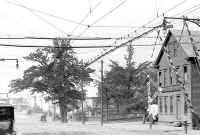
|
 |
|||||||
| Atlantic Avenue | |||||||||
 Workmen erecting the elevated railroad tracks on Atlantic Ave, Brooklyn Photo: Wallace G. Levison 09/11/1903 |
 Nostrand Ave Station, Brooklyn, New York, March 29, 1959 Atlantic branch viaduct. An Atlantic Ave. elevated train leaves the Nostrand Avenue stop. At the time of the photo, the Dodgers were a year removed from Brooklyn. Photo: William Rosenberg, Archive: John Dziobko www.godfatherrails.com I’d say shot at the conversion date from Tichy to Goodfellow Gray with Dashing Dan, around 1962. You’ll notice in this shot how the lead car is nice freshly painted and the Tichy car with white roof is kind of worn. These cars needed a paint job but the LIRR hadn’t gotten around to them as yet. Can’t be any earlier than 1962, because that was the date the LIRR FIRST began the grey with Dan logo. All the automobiles are all 50s with a 40s under the viaduct . . . . . So you can’t go by that. The conversion DID NOT occur in the 1950s. Info: Dave Keller |
||||||||
| LIRR Passenger Car Interiors | |||||||||
 LIRR #505 Builder photo - wooden passenger car 1898
|
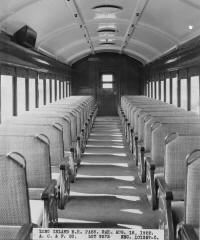 ACF Builder photo MP54C interior 8/18/1922 Note: Lot 9273 includes cars 1698- 1737 These cars were ordered on January 23, 1922 and built at ACF Berwick.
|
 MP54A1c #1775 interior not modernized - c.1957 Archive: Brad Phillips
|
 P54 interior 1959 Archive: Ron Ziel
|
||||||
 Interior MP54A #1668 Smoking car Jamaica Photo: Art Huneke Note: Bare bulb chandeliers |
 LIRR #1628 MP54A 6/15/1949 Photo: Fred Weber Archive: Dave Morrison |
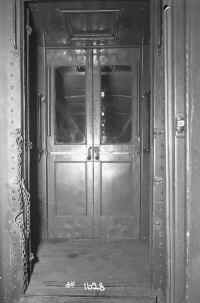 LIRR #1628 MP54A 6/15/1949 Photo: Fred Weber Archive: Dave Morrison |
 MP54's clerestory interior Archive: Steven Waldman |
||||||
 "New Models" LI Railroader 9/27/1962 Archive: Dave Morrison |
|
 LI Railroader June 1955 - New Cars P72 Archive: Dave Morrison
|
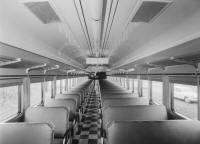 P72 interior 1955 Archive: Mike Boland |
||||||
  Photo: Steve Hoskins c. 1970's Archive: Steven Lynch
M1 Interior spotting features: |
 M1 #9547 Photo: Neil Feldman |
 M3 #9837 interior - Budd Red Lion Assembly Plant Late 1985-86 Photo: Transit America |
 M3 interior #9849 - Photo/Archive: Joe Polidora |
||||||
 M3 #9837 Budd/Transit America press photo Red Lion Assembly Plant interior late 1985-86 |
 LIRR M7 Seating Photo: Mike McDermet |
|
|||||||
 LIRR C3 interior seating 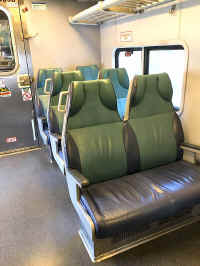
|
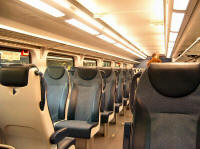 C3 |
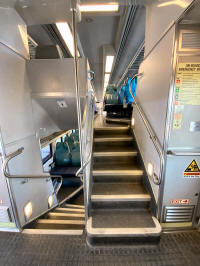 C3 Photo/Archive: C. Mark Sublette |
 LIRR C3 interior seating stair well |
||||||
| LIRR Parlor Car Interior Shots | |||||||||
 Amagansett #2000 observation lounge Greenport 9/011974 Photo/Archive: Edward Frye
|
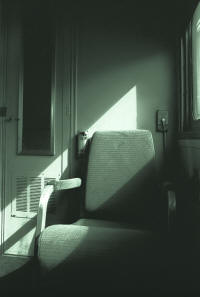 Mattituck 2066 double-bedroom Montauk 2/29/1976 Photo/Archive: Edward Frye |
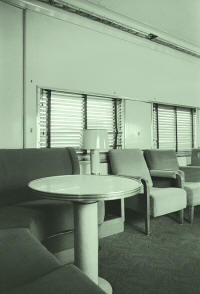 Pantigo #2051 buffet-lounge Montauk 2/29/1976 Photo/Archive: Edward Frye |
|||||||
 Poquott buffet - Flemingville, NY 9/271980 Photo/Archive: Edward Frye |
 Poquott #2063 at the Rochester & Genesee Valley Railroad Museum (Rochester Chapter NRHS) in Rush, NY. These two photographs were taken by NRHS member David Scheiderich; the two interior views were published in the Chapter's September 2008 edition of their newsletter, The Semaphore. |
 Poquott #2063 Rochester & Genesee Valley Railroad Museum Photo: David Scheiderich |
|||||||
 Pantigo #2051 double-bedroom Montauk 2/29/1976 Photo/Archive: Edward Frye |
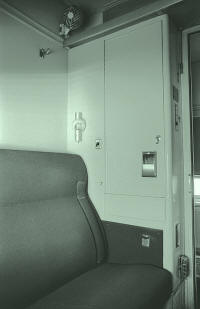 Wantagh compartment 2/29/1976 - Montauk storage - Photo/Archive: Edward Frye |
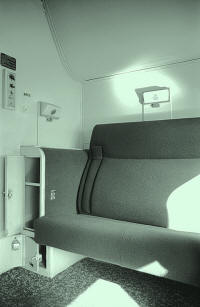 Nesconset bedroom - Montauk storage 11/16/1975 Photo/Archive: Edward Frye |
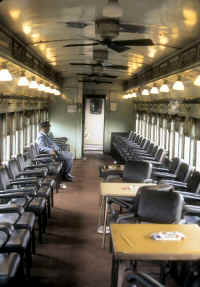 Interior CT54A #1677 MU Private Club car Jamaica Yard D 5/1971 Photo: Art Huneke |
||||||
|
Note: The "green tint"
in (many of) these images is a deliberate portrayal of what it was
actually like to be in these cars, shortly after Sunrise, with low-level
sunlight beaming through the "Lexan"-tinted windows. |
|||||||||
 Heavyweight parlor interior 7/08/1968 Photo/Archive: Richard Makse
|
 Weekend Chief parlor interior 1962 - LIRR PR Dep't. |
 Tuscarora Club #2037 LIRR Dining Car Photo: Ron Ziel c. 08/1961+
|
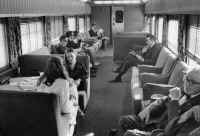 Parlor car Interior Greenport to NYC 6/01/1970 View opposite the "buffet" end (Newsday-Ike Eichorn ) The UP removed the cars’
original barber shop and valet in 1959, converting them to a “card”
room and buffet counter.
Info: Ed Frye |
||||||
|
During the 1960's, when
Walter F. McNamara revived parlor car service and created three all-parlor
cars trains (a fourth one in 1970), virtually every Montauk or Greenport
train had at least one parlor. A popular Monday train was #9, 1:56 PM out of Montauk for those or four
day weekends. Here on July 8, 1968, I shot a rarely-seen interior view of
one of the old heavyweight parlors. |
|||||||||
|
|
|||||||||
-4_small.jpg) |
Official Pullman Company (interior) photograph Double Bedroom in Pullman Plan 4069, which was PRR's Imperial-series 4-4-2 sleeper LIRR Wantagh, Wunneweta, et. al.
|
-4_small.jpg) Official Pullman Company (interior) photograph of a Buffet Lounge in Pullman Plan 4086A, which was PRR's Falls-series 6 DBR Lounge car LIRR Pantigo, Poquott, et. al. Photo: J. P. Van Vort Archive: Ed Frye |
|||||||
|
These photographs, above, were composed by the renowned Pullman photographer (1904-1945) J. P. Van Vort, identified by his unique "JP VV" signature on each Pullman negative he shot. Very little was written about Mr. Van Vort, but there is a "contemporary" homage to his craft in the May 1980 edition of Passenger Train Journal, in an article entitled "Dining a la Pullman", pertaining to the restoration of heavyweight 8-section restaurant sleeper Lotos Club by the late Peter Tilp, in which he photographed his car's interior in the spirit of J.P. Van Vort. I -- in turn -- photographed the interiors of LIRR's classic parlor cars, with the same intent. As Pullman's principal photographer, John P. Van Vort chronicled every possible aspect of newly-constructed passenger cars, from complete exterior views, to detailed interior shots of every feature and accommodation. Unique to all his Pullman photography was his "signature" imprinted on every camera negative...the initials "JPVV", with the first two letters "blended" together. Note this on the two photos below. Research/Archive: Ed Frye |
|||||||||
|
|
|||||||||
| Mr. Met, Watch the Gap | M1s Clearance Testing in Bridgeport | ||||||||
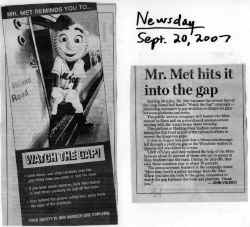 |
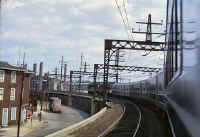 |
 Photos: H. Raudenbush c. 1970. 2 pairs of LIRR M1s towed by P-C FL9s at Bridgeport CT for clearance and suspension checks. Archive: Wayne Koch |
|||||||
| LIRR K4s - Pre and Post Facelift 1947 | |||||||||
 K4s #5409 Montauk Ashpit 1940 Archive: Dave Keller |
 K4s #5406 Train #4229 B Tower Bethpage 5/01/1947 Archive: Dave Keller
|
 K4s #5406 Train #4613 Cold Spring Harbor 3/16/1947 Archive: Dave Keller |
|||||||
| Long Island Rail Road - Odds & Ends - Page 2, Page 1 | |||||||||




